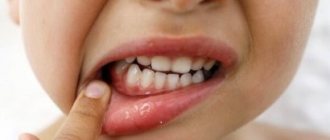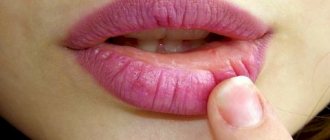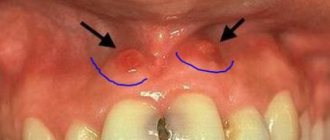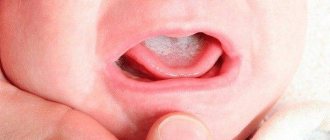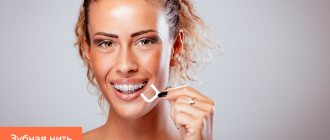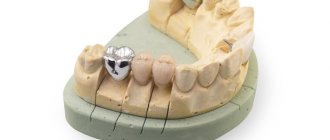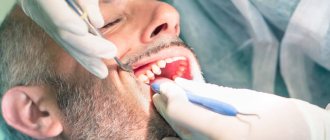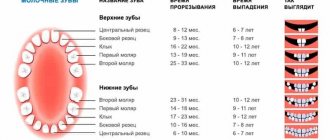Based on the condition of the skin, you can determine whether there are any disturbances in the functioning of the body. Rashes can be different: small red, dotted, spotty, colorless, watery, pustular, itchy, in the form of tubercles and nodular formations. Skin rashes appear much more often in children compared to adults. As a rule, this is due to the influence of external factors on the skin (sunlight, temperature, humidity, toxic and chemical substances, etc.). Internal processes and diseases also affect the skin.
If a skin rash appears in a child, you should consult a pediatric dermatologist. The First Children's Medical Center offers the services of qualified pediatric dermatologists in Saratov: with us you can not just get a doctor's consultation, but undergo all the necessary examinations and obtain opinions from related specialists. A timely visit to the doctor will allow you to find out the cause of the rash, eliminate it and eliminate the risk of relapse or the development of any complications.
What is newborn acne and what causes it?
Between two and five weeks of age, small pimples may appear on your baby's face (usually on the cheeks, nose, eyelids, chin and/or forehead). According to statistics, acne of newborns (or infant acne, neonatal pustulosis) occurs in 30% of babies. Experts do not agree on why acne occurs, but it may be due to one of the following reasons:
- inflammation of the skin caused by fungi of the genus Melassezia, which are part of the normal human microflora and colonize the skin in the first weeks after birth
- overactive sebaceous glands on the baby’s skin, caused by the specific action of maternal hormones (androgens)
Pimples on a newborn's face have nothing in common with acne in teenagers.
Causes of rashes
The reasons are physiological, which are provided by a natural response to an internal process in the body. There may also be pathological causes that develop against the background of:
- disorders under the influence of parasites;
- chemical and toxic substances;
- metabolic disorders;
- lack of certain vitamins;
- dysbacteriosis;
- gastrointestinal and renal function disorders;
- external and internal factors.
As a result, we can conclude that rashes in childhood do not appear without a reason.
It seems to parents that all rashes are almost the same. However, there is a primary rash, which formed first, and a secondary one, which developed over time, instead of or near the primary one.
How to get rid of acne in newborns
There are no home remedies to get rid of newborn pimples on the face. You need to wait until they disappear on their own. Typically, newborn acne goes away in about three to four months without leaving any traces. Here's how to take care of your baby's delicate skin if he has pimples:
- Wash him every day with warm water and mild baby soap, then pat dry.
- Try to avoid any rubbing of the affected areas of the skin, as this can make the process worse or even lead to infection.
- Do not apply lotions or oils to your baby's face.
- There is no need to follow a diet, since neonatal acne has nothing to do with the mother’s diet
Where skin rashes may appear
Small red rashes are the most common type of rash that can appear in children at different ages, especially in early childhood, preschool and primary school.
Small rashes without suppuration can appear on the scalp, face, armpits, shoulders, abdomen, back, buttocks, perineum, groin. Such rashes are typical for allergies (food, medication or cosmetic). They can also be the result of overheating and poor hygiene. This leads to diaper rash and prickly heat. In babies of the first year of life, the rash may cover the head, since thermoregulation is carried out through the skin in this area of the body.
The skin of the face may become covered with a red rash due to certain pathologies of a viral nature. In the case where the child was not given any suspicious new foods or medications, or there were no changes in lifestyle, rashes may still appear on the face. In this case, you should measure your temperature and consult a pediatrician.
Red rashes of various sizes and types can appear on the arms and legs of children against the background of infectious diseases of a viral and bacterial nature, scarlet fever, measles, leukemia.
It is quite difficult to detect colorless rashes, although over time they appear more pronounced. Most often, this type of rash indicates the initial stage of allergy development. Almost imperceptible rashes without a specific color or too pale, covering the body, can create a feeling of roughness when touched. This is similar to goosebumps running across the skin during fear or chills. The rashes are located close to each other and can be widespread.
Watery rashes are a clear sign of herpetic and pustular infectious diseases, allergies, insect bites and sunburn.
Bubbles filled with liquid contents may appear in the following places:
- in the facial area (nasolabial triangle, lips, nose);
- in the area of the sides and limbs, genitals, groin and inner thighs;
- in the anal area.
In this case, the development of an infection of pustular or herpetic origin can be suspected. In almost the same way, an allergic reaction to the use of skin care products occurs upon contact with chemicals and toxins, which cause a local reaction reminiscent of a chemical burn.
Due to prolonged exposure to sunlight, blistering lesions may appear on the skin, and the skin will be red and slightly swollen.
The appearance of blisters on the skin in the area of the hands and feet may indicate dyshidrosis - blockage of the sweat glands. The palms and heels may become covered with blisters due to the development of certain pathologies of a fungal nature.
When to see a doctor
If you are concerned about your baby's complexion or if you are concerned that the condition is not improving after three to four months, consult your pediatrician. Your doctor may prescribe a special cream to treat acne in a newborn. Do not use over-the-counter creams or any other medications for acne without first consulting your pediatrician as they may harm your baby. Contact your pediatrician if your newborn has any of these symptoms:
- blisters on the skin
- peeling skin
- heat
- uncharacteristic tearfulness
- poor appetite
Types of rashes
Various childhood diseases manifest themselves as primary symptoms in combination with secondary symptoms. The initial rash varies. Equally important is the quick reaction of the parents and the determination of what formation has formed on the child’s body:
- Tuberous. Any detail of such a rash is located deep in the dermis, in other words, the rash is not superficial. There is no cavity, there is a small protrusion in the form of a tubercle, the color of the skin may change to red or purple.
- Blisters. This is what people call almost any formation on the skin. However, in reality, the blister is a round, pink formation that lacks a cavity and contents. A real blister is short-lived, it can last from a couple of minutes to a couple of hours, then disappears without a trace. As an example, we can recall a nettle burn.
- Papular eruptions. This rash is also called nodular, since the papules are similar in appearance to nodules, which differ in shade from the normal color of the skin. Papular rash can be superficial or deep, and papules can disappear without a trace.
- Vesicular rash. This rash appears as blisters on the skin. There may be a serous, colorless or serous-bloody liquid secretion inside. Vesicles can be single or fused, forming a formation with numerous chambers. Opened vesicles leave erosion on the skin, the size of which is equal to the area of the bottom of the vesicle.
- Bullous. This type of rash also appears in the form of vesicles, but compared to vesicles, the bulla has a more impressive size - at least 5 mm in diameter. Such blisters may, like vesicles, contain serous or serous-bloody liquid contents.
- Pustular. Pustules are a pustular rash. It can be superficial or located deep in the skin. The opening of superficial pustules passes without a trace. If medium and deep pustules (boils, carbuncles) are opened, unsightly scars may occur.
- Spot-like rashes. This type of rash does not appear on the surface of the skin, but is characterized by a change in shade in some areas of the body. Such rashes can be vascular or petechial.
- Roseola. This is the name for rashes that appear in many pathologies of an infectious nature. All elements of the rash are pink or moderately reddish in color. The structure of roseola resembles specks. When the skin is stretched and pressure is applied, the rash turns pale and disappears for a while.
- Hemorrhagic rashes. This type of rash appears as red blood spots that form in the area where the blood vessel burst. When the skin is stretched, hemorrhage does not disappear.
Secondary rashes also vary. It manifests itself in the form of scabs, which are accompanied by the transformation of elements of the primary rash (usually vesicular or pustular) into crusts after opening. The development of cracks, erosions, detachments of epithelial cells, abrasions, scars and ulcers is also often observed as secondary manifestations.
Atopic dermatitis51
This is a multifactorial chronic inflammatory skin disease, which is characterized by itching, relapses, age-related features of the location and morphology of the affected areas. In the pathogenesis of the disease, a special place is occupied by hereditary determination, due to which the following occurs:
- the skin barrier is broken;
- immune system defects occur;
- hypersensitivity to allergens appears;
- pathogenic microflora develops;
- the functioning of the autonomic nervous system is disrupted, resulting in an increase in the synthesis of inflammatory mediators.
Acne on a child's body associated with the manifestation of atopic dermatitis occurs in 20% of children.
In different age periods, the manifestations of atopic dermatitis differ:
- Infant. It appears in the first 3 months of a baby’s life. The clinical picture is dominated by erythematous spots, vesicles, papules located on the forehead, cheeks, and scalp. There is severe itching, weeping, and swelling. The location of the disease is the extensor and flexion surfaces of the limbs.
- Children's. This period is characterized by a rash represented by papules, papulovesicles, erythematous-squamous formations located on the arms (elbows, wrists, forearms), legs (feet, knees, ankles).
- Teenage and adult. Rashes on the child’s body are concentrated on the flexor surfaces of the arms and legs, on the back of the neck, and in the behind-the-ear areas. The disease is characterized by the appearance of erythema, peeling, papules, cracks, and infiltration.
Do pimples need to be treated?
As you can see from this material, the majority of small white pimples in children go away on their own. You just need to wait, usually by the age of two months, children have completely smooth skin without rashes. You should not squeeze pimples, otherwise there is a risk of damage to the upper layers of the skin, infection and scarring later.
If you doubt the causes of acne, be sure to visit a specialist to make a correct diagnosis. To alleviate the child’s condition, the following options can be recommended:
- washing with boiled water three times a day;
- bathing the baby in a weak solution of potassium permanganate;
- bathing a child in a line;
- rubbing the baby’s face with a decoction of string or chamomile;
- competent care for baby's delicate skin.
Under no circumstances use fucorcin, a strong solution of potassium permanganate or brilliant green for treatment, avoid lotions with alcohol, as all these compounds will negatively affect the baby. You should also forget about fatty oils, ointments, powder, calendula tincture, hormonal ointments, lactic acid bacteria, adsorbents (for example, smecta), antibiotics and antihistamines. And, as already mentioned, you should not squeeze out pimples of any kind in children.
Preventive measures
Almost all acne in babies is not dangerous. Their occurrence can be easily avoided if you follow a number of measures:
- watch your diet;
- if there is a reaction to the mixture, replace it;
- properly care for your baby and maintain hygiene;
- give the baby air baths;
- wash your baby’s underwear with specially designed powders.
If acne does not go away for a long time and bothers the newborn, doctors usually prescribe medications: Panthenol, Bepanten or Zinc ointment.
Acne18
Acne is also a chronic inflammatory disease that is prone to recurrence. As with atopic dermatitis, there is a genetic predisposition to acne. But acne is a disease of the pilosebaceous follicles.
Childhood acne has its own characteristics depending on age:
- Infant. They are represented by closed comedones, localized on the chin, forehead, and cheeks. Papules and pustules are much less common.
- Acne in early childhood. Rash in the form of comedones, papules, pustules, nodes rarely appear. The location is mainly on the face.
- Middle aged acne. Mostly comedones and inflammatory elements appear on the face.
- Preteen. At 7-12 years old, acne on the face may indicate early puberty. The first to appear during this period are, as a rule, black dots in various areas.
Purulent rashes
Pustular purulent rashes are characteristic of bacterial infections. Most often, such diseases develop under the influence of Staphylococcus aureus. Sometimes the reason may lie in the influence of epidermal staphylococcus and streptococcus, as well as some other microbes, on the body.
A similar rash can appear due to microtraumas on the skin, scratches and wounds that allow microbes to penetrate inside. If the rashes are itchy and itchy at first, and the baby begins to scratch them, a bacterial infection occurs and pustules appear.
The formation of pustules in the area of the knees and elbows in childhood is possible with frequent trauma to the skin due to numerous falls. The formation of deep abscesses is called furunculosis.
What parents need to do
To assess the situation, parents need to examine the child’s skin by undressing him. It is necessary to determine the nature of the rash (vesicle, pustule, papule, etc.), and its area. It is necessary to remember and analyze the situation preceding the appearance of a rash on the body.
The next step is to measure the temperature, examine the throat and tonsils, and identify other signs if any. You need to decide whether to call a doctor at home or visit a medical facility yourself.
What not to do if a rash appears
Prohibited actions:
- squeezing out pustules;
- scratching the rash;
- self-treatment;
- opening of bubbles;
- applying brightly colored products to the skin, as this complicates diagnostic measures.
Do not forget that some infectious diseases accompanied by the appearance of skin rashes are contagious. As a result, you should not go to the clinic with your child, since you can infect someone while waiting your turn. In such a situation, it is recommended to call a doctor home.
Treatment of pimples on a child’s body
If a child has pimples on his body, he should consult a dermatologist. Only a doctor can accurately determine their cause and prescribe the correct treatment. One of the groups of drugs that can be prescribed by a dermatologist for acne are topical antibiotics18. Please note that they have age restrictions. For example, Clindovit® gel is not recommended for use under 12 years of age6.
Clindovit® is a gel that helps fight acne. The main active ingredient in its composition is the antibiotic lincosamide clindamycin6. The drug exhibits antibacterial activity against a large number of strains of propionibacteria6. Clindovit® helps reduce the level of free fatty acids on the skin6. To reduce the risk of antibiotic resistance, it is recommended to combine the use of the drug with the use of azelaic acid (for example, Azelik® gel) or benzoyl peroxide28.
